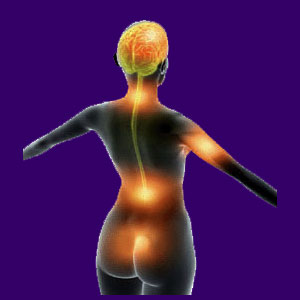
Demonstrating a congenitally narrow spinal canal can create the ideal conditions for misdiagnosed spinal stenosis and unnecessary treatment. Every spinal canal is different and some are simply narrower than others from birth. However, a narrow canal does increase the chances of suffering symptomatic versions of spinal stenosis later in life.
What does it mean when the spinal canal is congenitally narrowed in size? How does a patient know whether their diminished spinal canal diameter is a result of a congenital defect, an outcome of normal spinal degeneration or a pathological turn of events that might create pain? Answering these questions accurately is vital in order to increase the chances of staying healthy, despite having a less patent spinal canal.
This essay details what it means to have a congenitally narrow spinal canal and how this condition differs from spinal canal changes enacted by age, activity or injury. We will also provide important cautions for patients who are aware of congenital defects in their spinal canal that may cause problems later in life.
Congenitally Narrow Spinal Canal Defined
Having a narrow spinal canal means that the interior space of the space is less than average or reduced in size by some type of stenosis. Narrow is a subjective term, since the size of each spinal canal varies from person to person. Adding the word congenital to the diagnosis of a narrow spinal canal implies that the condition was present prior to birth and might be created by a structural defect, spinal abnormality or simply be the way that person’s spinal canal developed as a fetus.
The spinal canal is the space that passes through the vertebral bones, bordered by the vertebral bodies on the anterior side and the spinal processes on the lateral and dorsal sides. The spinal canal is surrounded by bony tissue and contains the most precious and delicate structures of the central nervous system, including the spinal cord, spinal nerves, cerebral spinal fluid and various encapsulating membranes.
Congenitally Narrow Spinal Canal vs. Developed Stenosis
A congenital condition implies that the structural change existed prior to birth. In the cases of congenitally narrow spinal canal formation, the diameter and effective size of the canal is deemed to be smaller than would be typical due to focal or general changes in the tissue. Focal changes affect only certain areas of the spinal canal and are usually related to structural defects in the bone or spinal discs. General spinal canal narrowing implies that the entire canal is smaller than would be deemed typical.
It is perfectly normal and universal for people to demonstrate narrowing of the spinal canal as they age. These structural changes are called spinal stenosis and are caused by a combination of factors, including degenerative disc disease, herniated discs, spinal osteoarthritis, vertebral subluxation, spondylolisthesis, facet joint deterioration, changes in spinal curvature and other possible reasons, as well. Developing spinal stenosis is normal, but it generally takes decades of life for these changes to take place and they almost always exist focally and not generally, in contrast to congenital narrowing of the spinal canal that exists from birth and may affect much larger areas of the canal in some people.
Congenitally Narrow Spinal Canal Warnings
We must begin this section by saying that spinal stenosis is normal and we will all get it if we live long enough. Most people will demonstrate marked degeneration of the spinal canal by the age of 40 in the most common regions of the mid to lower neck and lower back. Spinal stenosis is not inherently symptomatic and most people will never develop serious symptoms, despite demonstrating severe canal narrowing as they enter old age.
Spinal stenosis can only become a problem if the size of the canal becomes so small as to interfere with proper neurological functionality. In these cases, the spinal cord and or spinal nerve roots may suffer structural compression that deprives them of their natural ability to effectively carry neurological messages of the motor, sensory or autonomic varieties. Simply having the spinal cord or nerves touched, having a mass effect, being impinged upon, being encroached upon or being displaced will not guarantee symptoms and actually rarely results in symptoms. Cord or nerve compression is the only virtually universally pathological way that spinal stenosis can create symptoms of substantial clinical significance.
Therefore, people who have been diagnosed with a congenitally narrow spinal canal should know that they may be at greater risk for symptomatic versions of stenosis later in life, but this is not an unavoidable fate. Many people with narrow spinal canals never suffer symptomatic stenosis. However, do not discount the ability of the diagnostic nocebo effect to incite back pain and other expressions if the person believes that they will suffer pain due to a less patient spinal canal. In all cases, diagnosed patients should always receive a factual explanation of their condition and be treated with knowledge therapy to prevent pain due to a conditioned mindbody response, rather than any structural pathology that may never even come to exist.
Back Pain > Spinal Stenosis > Congenitally Narrow Spinal Canal





